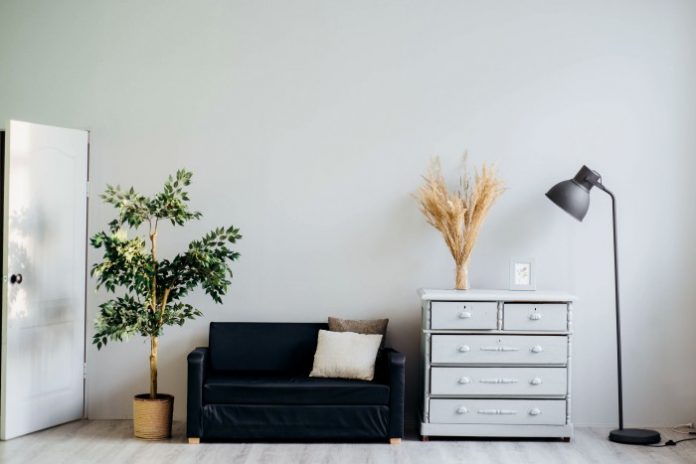Light? It’s all around us – and if it isn’t, old uncle electricity can arrange it for us. Surely that’s the least of your problems when you work from home. Right? Well…
Sure, it’s a very basic requirement, just a notch or two below the need for air to breathe. But just like the necessity for a good supply of nitrogen and oxygen in the right proportions and without pollutants, lighting must be taken seriously.
Here’s why.
In fact here’s a list of whys.
Health and safety
Efficiency I (your own)
Efficiency II (what your lighting consumes)
Flicker
There are other things to take into consideration, but that’s enough to be going on with.
Often when people decide to work from home they don’t really think it through (and there are plenty of articles on this site which look at various other aspects. From marketing to setting your own salary there are various questions one must answer).
Although these questions may be a little further down the line for you if you’re just starting, or just thinking about starting.
But light enters the equation immediately because it affects your life.
1. HEALTH AND SAFETY
Okay, it may be only you and perhaps one other person. But that doesn’t make you exempt from H&S. It makes you responsible for it. Responsible for your own welfare and that of anyone who comes into your workspace, be it customers, coworkers or the guy who’s come to fix the phone.
If this workspace is purely your domain, you owe it to yourself and your family to look after yourself. That means everything from breaking your neck tripping over a cable to ruining your eyesight through strain. So the lighting has to be adequate.
How do your ensure this? You will find articles elsewhere that talk in technical terms about how many lumens you need, and if you’ve never heard of lumens you can bet your life the guy in the hardware store isn’t going to give you a convincing explanation. Lumens are related to watts, which we all know a little bit about, even if it’s only that a 150 watt bulb is quite powerful while a 30 watt one is not.
And that little bit of knowledge may sound insignificant, but it’s the basis of your lighting “strategy”, to use a word that is bandied about a lot in the business world. Your strategy here is to put sufficient lighting in the right places and you’re going to achieve it by seeing what the situation is like now and doing something about it if it’s inadequate. Again, don’t expect too much from the guy leaning on a pile of boxes in the lighting section of the converted warehouse.
“How dark is it right now?”
“Pretty dim.”
“How bright do you want it to be?”
“Pretty bright. But not too much.”
As conversations go it’s not going to be very illuminating (sorry).
2. EFFICIENCY I (YOUR OWN)
We work best in comfortable conditions.
So this raises the question not just of electric lighting, but the far preferable natural variety.
If this sounds like a no-brainer, it all depends on where you live. If you’re in an area where it rains a lot, is frequently overcast and rather murky, you have different considerations from someone based where the sun shines all day most days.
So in a relatively dark area you need all the windows you can get and as few curtains and blinds as privacy will allow.
Here we have to jump prematurely down our list to the subject of glare. The assumption that staring out of a window is conducive to work is a flawed one. There’s this image of Ian Fleming sitting in his clifftop home in Jamaica, gazing at the Caribbean and writing the James Bond books. But that’s like the old notion of all-night writing sessions with a typewriter a bottle of whisky. It doesn’t work for everyone.
Some people find it distracting and need to forget about the world outside. If it looks too good out there you might not have the discipline to get your work done. And even if you do, looking out of the window at the brightness can make it difficult to adjust when you turn back to your computer or whatever it is you need to concentrate on.
Conversely, if you sit with your back to a bright window, the brightness reflects off your screen in the irritating and potentially harmful phenomenon known as glare.
So from a light point of view it’s better to be sideways on to the window, with nothing distracting in front and a plain old wall behind.
3. EFFICIENCY II (WHAT YOUR LIGHTING CONSUMES)
This modern consideration could be seen as a product of the lighting manufacturers’ over-efficiency. They can make their products so bright and hot that you’re using electrical energy which is not only expensive but damaging to the planet. The 21st century dictum, therefore, is to use low-energy bulbs, which cost a bit more but last longer and are kinder to the environment. It’s not rocket science, but there are people who have given lighting and choosing the right light bulbs some serious attention.
4. FLICKER
This is an irritant both mentally and physically, constantly worrying the eyes as they struggle to adapt, as well as getting on your nerves. It can be caused by old or cheap lighting units, particularly fluorescent ones, and if you’re afflicted with this particular problem, you’re going to have to do some replacing and upgrading – which isn’t a bad idea anyway, as long as you can afford it.
CONCLUSION
It all depends on your particular situation, the environment you’re working in. And if you don’t have any choice about that, you will just have to go through the checklist and do what has to be done.
Whatever you do, though, don’t ignore the lighting situation. It can make the difference between success and failure, health and illness.
Of course, there are always exceptions, and if you have a tip you’d like to share with us, feel free. We’d love to hear from you.
Find a Home-Based Business to Start-Up >>> Hundreds of Business Listings.
















































